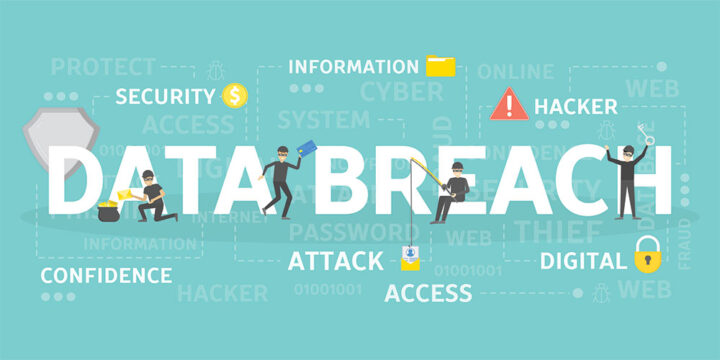Teaching Your Employees How to Prevent Data Breaches

An anonymous fraudster hacking into your servers with brute force isn’t always behind the biggest data breaches. While these criminals can steal data, your employees are the far more likely culprit.
Employee negligence takes the lion’s share of data breaches, as workers accidentally or purposefully expose confidential data to scammers. Unintentional or not, even a minor data breach could come with quite the sticker shock.
That’s why your security policies are crucial in the fight against costly data breaches. Teaching your employees how to safeguard information and identify scams can help you keep your data out of the hands of fraudsters.
What is Employee Negligence?

Employee negligence is a sweeping term that defines any careless action that causes problems for your business. Whether this is a data breach, theft, injury, or loss, your employees usually cannot be held liable for anything that results from their negligence.
The onus is on the employer — you — to take responsibility for their actions, as you may not have provided the right training, tools, or security to support them. The only exception is when your employee demonstrates a willful or malicious intent to cause damages.
How to Prevent Employee Negligence
With the burden resting securely on your shoulders, it’s up to you to ensure your staff understands their role in your company’s security. Proper training and workplace culture can help instil the importance their actions have in preventing data breaches.
1. Host Regular Online Training Courses
When you’re first onboarding a new hire, it’s easy to pile on security training at the start of their employment. Just like their employee package, it’s important reading. It outlines their rights and responsibilities.
However, it’s easy to overload a new hire with information. With all the other documents they need to understand for their day-to-day tasks, the security tips may not stay top-of-mind for long.
That’s why it’s crucial you make security training an ongoing thing for your whole staff. Consider creating a web-based training system that allows your employees to update their security know-how. Reference any compliance requirements your industry may have — whether it’s HIPAA, PCI, or something else entirely.
Keep this updated with information about new email scams, explaining the red flags of phishing attacks. Phishing attacks take the guise of a trusted sender to convince employees to share personal or company data. At first, they may be hard to identify, but they’re easy to spot with training.
2. Make Security Part of Your Everyday Operation
Regular training is a good first step towards improving security, but these documents and tests rely on short-term memory. One employee can ace their training one day only to make a simple security error a week later.
A security-minded office culture helps hammer the point home that each employee plays a role in security. In addition to having a security manual, make it so that you structure daily communications around security.
Find a balance between instruction and acceptance. You don’t want to create a toxic atmosphere where employees feel pressured to perform or worried about admitting they’ve made a mistake. If they feel as though they have to hide their mistakes, you’ll only make your problems worse.
You want to create a positive work environment, empowering employees not only so that they can recognize security issues but also so that they feel comfortable coming to you when there’s a problem.
3. Use Access Control Cards

Assigning an ID badge to every employee is just good business. Your security personnel can look out for these photo ID cards at entrances and exits, making sure only those with the right identification can move freely throughout your building.
More still, you can add these cards to your digital security policy, making it necessary for employees to swipe or scan their ID badge before they can gain access to computers. This makes it easy to control which employees can access confidential data, ensuring only those with the appropriate security clearance and training may gain entry.
A variety of ID badges are available, and each one provides unique advantages for different industries. If you aren’t sure which ID card printer brand is right for you, check out Avonsecurityproducts.com to see a convenient comparison of your options.
4. Secure Devices

Laptops, tablets, and smartphones have become a normal part of business, but these remote devices are often left unprotected. If stolen, these devices can expose financial information, confidential intellectual property, or customer and vendor data.
Exposure of customer data due to a lost or stolen device can get your business into hot water with privacy organizations, which is why you should issue devices with passwords, encryption programs, and anti-virus services.
This way, even if an employee misplaces their work phone or laptop, the person who finds it can’t uncover any information.
5. Tailor Training for High-Risk Groups

When it comes to understanding the security protocols of your company, it’s important to think of your staff in terms of risk levels. Some employees are less likely to make a mistake. Think of the IT professionals who helped you draft your security policy; they probably have a better understanding of their risks and responsibilities than the average employee.
As for everyone else, there could be varying levels of education that you need to accommodate. A one-size-fits-all approach may not work if your weakest link doesn’t understand their training.
You should also consider high-risk employees who stand to expose the most important information. Professionals in accounting, HR, or C-suite positions have access to financial data that make them bigger targets than others.
Pay close attention to these departments to ensure they recognize the risk involved. More still, make sure you give them the training and support to understand how their actions protect the company.
Bottom Line: Education is the First Line of Defense

While brute force attacks do happen occasionally, data breaches as a result of employee negligence are far more likely a problem your company will face. Unfortunately, all data breaches come with the same steep price tag, regardless of their source.
However, you can do your part to prevent employee negligence by taking an active role in increasing your employees’ security awareness. Keep these tips in mind to prevent a breach.
